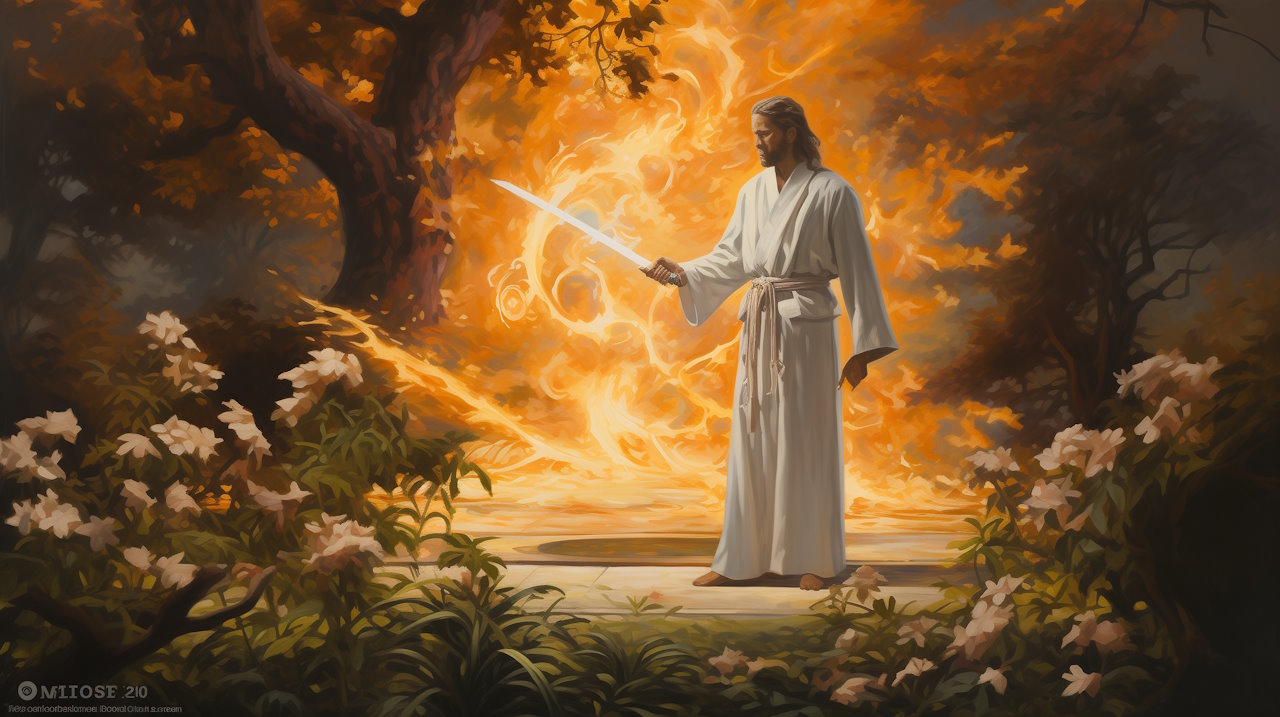
The Fall(s)
(The Tree of Life)
Primary Content (From 1 Sefer Moses, the Book of Beginnings):
- Chapter 5 – The Fall
Additional Reading (Comparison Texts):
- Genesis 3 from the Inspired Version of the Bible (or LDS Moses Chapter 5)
- The Book of Rayaneck Chapter 6, starting in vs 42. (from the Chronicles of the Children of Araneck)
- Sealed Moses Chapter 3, v1-12 (from the Sealed Book)
Objectives:
- Compare and Contrast: The Fall Above, the Fall Below
- Compare and Contrast: Fruits of the Fall vs. Fruits of the Tree of Life
Kabbalistic Concepts:
- The Tree of Life
Notes Before Reading:
The Book of Abraham as revealed through Joseph Smith Jr ends before it gets to this point in the creation narrative. Perhaps the Book of Abraham from the plates of brass will contain more insight into the fall once it’s translated, but there are other places that we do have that also cover the same story as what is in 1 Moses 5. Including the Book of Rayaneck, which is included in the reading below to use for comparison.
I invite you to read this with a fresh perspective. Most latter day saints (or Christians in general) have dogmatic needs for the story of the fall to follow a very specific doctrinal narrative. I invite you to set that aside, not to say that your existing understanding of the details of the fall is “wrong”, but instead, in order to read it as a kabbalistic allegory without worrying about the doctrinal implications of allowing the story to have different meaning from whatever doctrinally entwined interpretation you currently prefer. The important thing to do (at this point) is to allow it to say whatever it says, and just collect the details of the narrative, and get a feel for what it is saying and not to let it need to be reconciled against your existing beliefs about the fall. Remember, from a kabbalistic standpoint the question is not what happened historically, the question is … how do I use historical events as a backdrop to explain an allegory.
Engage:
Engage the Concepts through Comparison
This chapter contains the stories of two falls. They are independent events, but are tied together in interesting ways. Consider the differences and similarities between the fall of Satan and the fall of mankind. Consider the interconnectedness of it. How events originating in the heavens manifest themselves again on the earth in a more physical way.
This chapter also contains two trees. A Tree of Knowledge of Good and Evil and a Tree of Life. Both of which have fruit that changes a person who partakes. This looks like something that could be compared and contrasted for understanding by mutual comparison.
Engage the Spirit through Contemplation
The tree of life is a mysterious thing. Within most of Christianity, it’s really just a “garden of Eden” thing that mankind isn’t allowed to eat anymore because … Eve. Within Mormonism, we have Lehi, Nephi, Alma and Amulek who talk about the Tree of Life, but the context of the tree is different enough that they are generally set aside as being different things from Eden’s Tree of Life.
The thing from this chapter that I recommend that you ponder upon in search of deeper meaning is the Tree of Life. Is the Tree of Life that Alma and Amulek promise the Zoramites will grow within them, springing up to everlasting life the same tree as what Adam and Eve were prevented from partaking after being cast out of Eden? Is the tree Lehi ate from that same tree as was in Eden? Is the tree that Nephi saw in vision, that he understood to represent the love of God the same tree? Are these physical trees? Can we partake of the fruit of this tree while in this mortal life? If not, why did Lehi? If so, why couldn’t Adam and Eve? Is it a physical tree or trees? Is it spiritual? Is it metaphorical only? Is it something you should be seeking? If so, how urgent and how literal is that quest? There is much to ponder.
Engage the Group through Discussion
When you meet together as a group to discuss the content of these chapters, here are some ideas to help get the discussion going:
In the Book of Rayaneck, v47, has the word “she” when talking about the cherubim and flaming sword. Is the “she” a typo? Is it a reference to the cherubim? The sword? The tree being guarded? Eden herself? What’s going on there?
The Sealed Book’s account of the fall of Satan has a lot of narrative that is not in other accounts. Did you find any of those things interesting? Compelling? Off-putting? illuminating?
If the fall is something allegorical that we all do (or have already done), how does this allegory fit into our lives? Can we liken this scripture to ourselves?
Why do three of these accounts give a warning at the end saying not to distribute them freely? What’s the point in scriptures that are hidden?